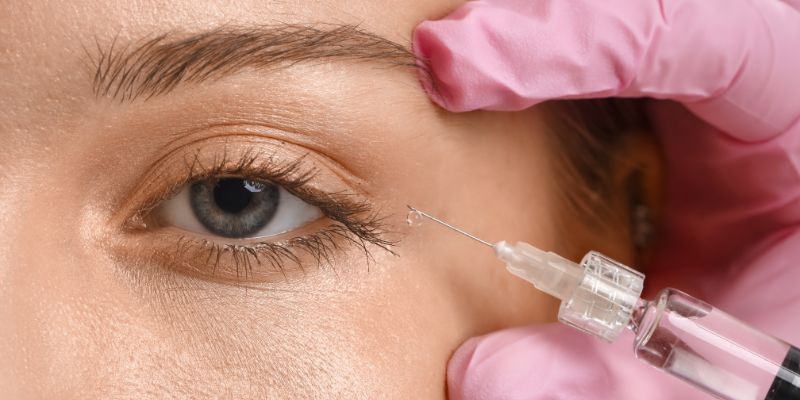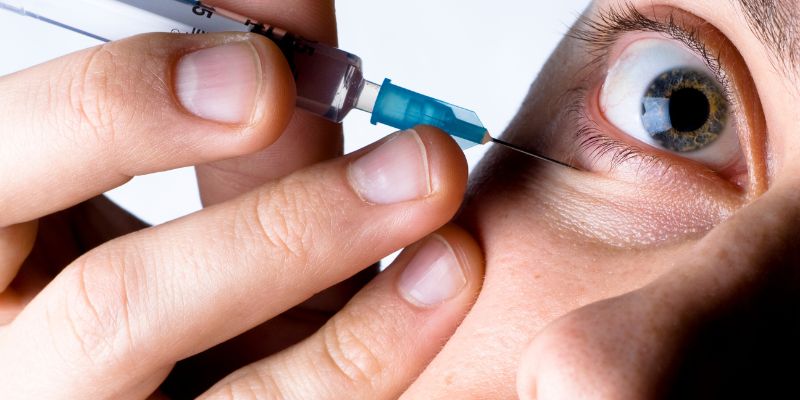Injections For Macular Degeneration: Everything You Need To Know
Macular degeneration is among the major causes of visual loss, particularly in elderly persons. You might be dealing with this problem if you have observed changes in your eyesight, such as blurriness of vision or difficulty seeing minute details. In some situations, even better vision can result from therapies, including eye injections, helping slow down macular degeneration's advancement.
Usually utilized in cases of wet macular degeneration, these injections target the aberrant blood vessels generating damage. Like any treatment, though, you should consider the advantages, drawbacks, and expected outcomes. We will walk you through the workings of these injections, their possible adverse effects, and what kind of results you should expect in this article. Knowing the whole picture can help you decide about your eye health.

What Is Macular Degeneration?
Affecting the macula, the primary area of the retina in charge of sharp, detailed vision, macular degeneration is a degenerative eye condition. Your capacity to complete daily chores may be greatly affected by macular degeneration. Activities like reading, identifying faces, and driving get difficult, and you can have distorted or blurry vision. Macular degeneration comes mostly in two forms: dry and wet. The more frequent kind is dry macular degeneration, which advances slowly over time and progressively compromises vision.
Conversely, abrupt and extreme vision loss can result from wet macular degeneration. This kind of injury to the macula results from aberrant blood vessels growing under the retina leaking fluid or blood under control; scarring and macular degeneration follow. Management of this disorder and preservation of vision depends on early discovery and treatment. Regular eye exams can detect early-stage macular degeneration, enabling quick management.
How Do Injections Work?
Anti-VEGF, or vascular endothelial growth factor, treatments are injections used in macular degeneration. These injections aim especially at a protein in the eye that promotes the development of aberrant blood vessels. These blood veins can leak fluid or blood, causing injury and vision loss underlying the retina. Usually monthly, the injections are given right into the eye. These medications assist in stopping the VEGF protein from acting, preventing the development of fresh blood vessels.
This is crucial for reducing macular degeneration and slowing the course of vision loss. Sometimes, people may even see an improvement in their vision. The patient's response to treatment will affect the frequency of injections; some patients may need fewer when the disease stabilizes. Frequent eye doctor monitoring guarantees that the treatment strategy is customized to every patient's particular needs for the best results.

Benefits of Injections for Macular Degeneration
The injections for wet macular degeneration have several major benefits that might significantly influence a patient's quality of life.
- Stabilizes Vision: Injections for wet macular degeneration mostly help stabilize vision, stopping more deterioration.
- Halts Disease Progression: Maintaining quality of life depends on many patients' stopping the progression of their ailment.
- Improves Vision: After therapy, some patients might notice changes in their vision, allowing them more clarity.
- Enhances Daily Activities: Patients with better or stabilized vision can more readily engage in daily activities such as reading, driving, and face recognition.
- Targeted Treatment: The injections successfully treat the issue of aberrant blood vessel development in the eye since they act directly at the injury site.
- Quick Procedure: The injection process is short, which disrupts a patient's daily schedule.
- Fewer Side Effects: For many individuals, injections are safer than other treatments as they usually cause fewer side effects.
- Revolutionary Treatment: For millions at risk of vision loss, this approach has transformed the treatment of wet macular degeneration and offers hope and better results.
Risks and Side Effects of Eye Injections
Patients should be advised of several hazards involved in eye injections. Though rare, the major problems are infection, retinal detachment, and higher eye pressure. Vision and general eye conditions can suffer greatly from these issues. Patients should especially pay great attention to their doctor's recommendations and attend scheduled follow-up visits to check for possible problems. If any hazards develop, a quick response can help to prevent major results.
Common adverse effects of eye injections are redness, inflammation, or pain surrounding the injection site. Usually modest and transient, these symptoms go away in a few days. Although these side effects can be uncomfortable, often they do not cause long-term issues. Personal risk factors, including general health conditions or pre-existing eye diseases, can influence a patient's reaction to the injections.
Many patients discover that the advantages of injections for wet macular degeneration usually exceed the possible dangers and adverse effects. Dealing with any anxiety and guaranteeing a good treatment experience depends on keeping open lines of contact with healthcare professionals. Knowing both the hazards and side effects can enable people to make wise judgments concerning their eye condition.
Long-Term Results and Outlook
Anti-VEGF injections have had encouraging long-term benefits for many people with macular degeneration. Studies show that more than 90% of people have stabilized visiontheir condition does not worsen with time. This stabilization is crucial for maintaining everyday activities and preserving the quality of life. About thirty percent of patients also say their vision has improved, enabling them to perform once-challenging activities.
Usually beginning with monthly injections, many patients may need fewer treatments as the illness stabilizes, resulting in a more manageable long-term care plan. Monitoring improvement and making required changes to the treatment plan depends on regular eye exams. As studies continue and fresh therapeutic innovations emerge, the future seems especially bright for those with wet macular degeneration.
Conclusion:
For many patients, injections for macular degeneration provide a hopeful therapy choice that helps to stabilize and enhance vision. The advantages usually exceed the possible hazards and adverse effects; hence, this method is necessary for wet macular degeneration treatment. Frequent eye tests and honest discussions with medical professionals guarantee that treatment strategies are efficient and customized to particular needs. The prognosis for patients is still bright as long-standing research is under progress and new treatments surface. Those who practice proactive eye care can protect their vision and improve their quality of life, guiding their choice of therapy.












